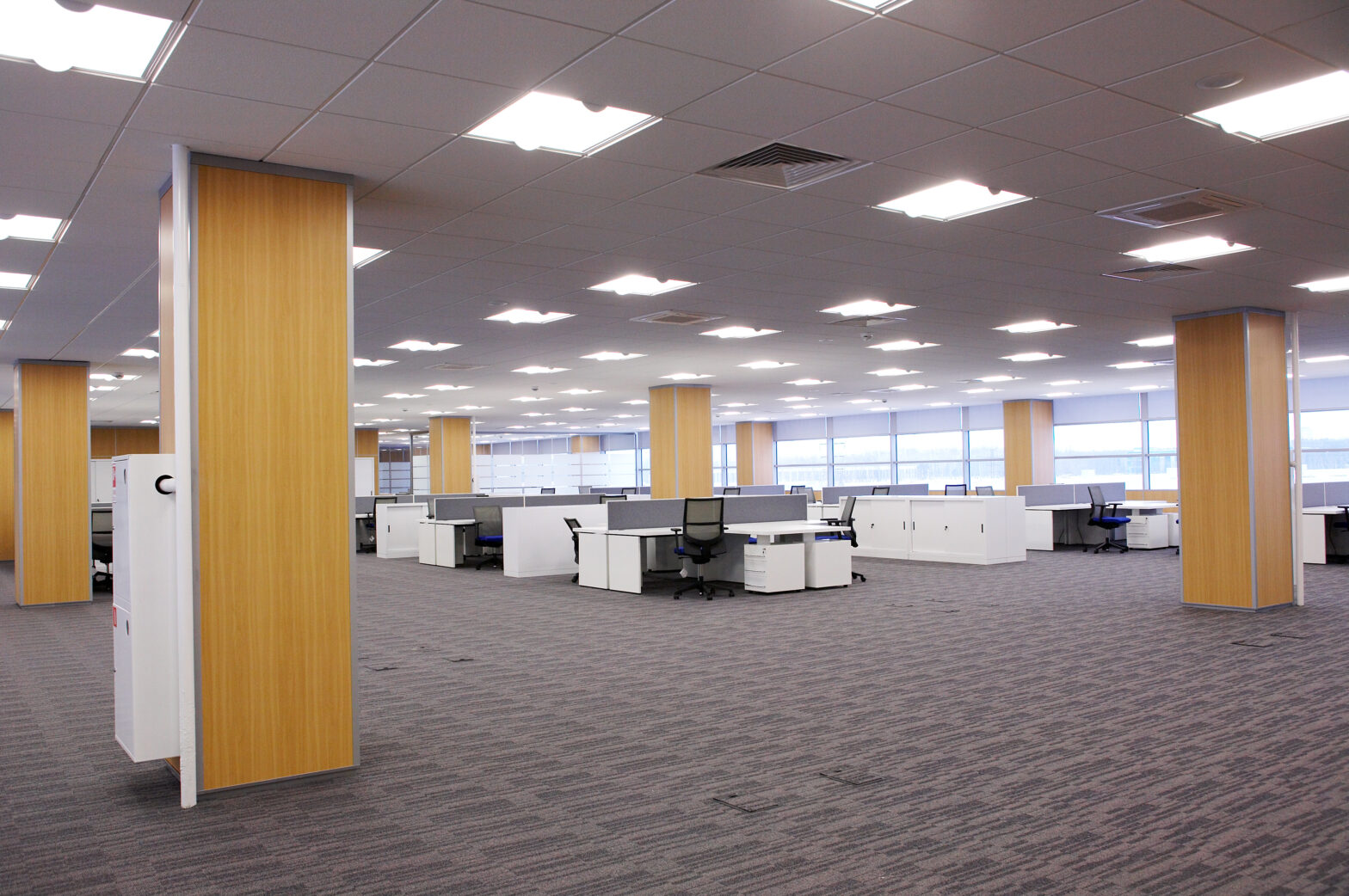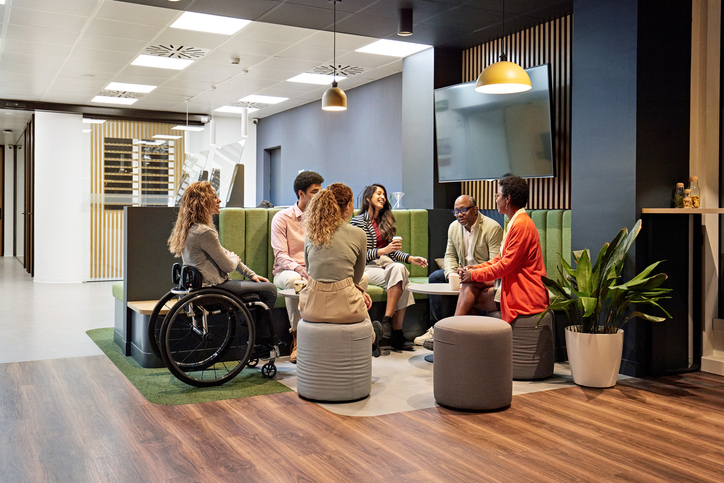In today’s performance-driven society, employee productivity is the key to success for many businesses. No longer is it enough to provide workers with the right tools to do their jobs properly. From the chairs and desks they sit on, to the facilities and office buildings they work in, it is becoming increasingly important to consider the working environment.
However, one crucial element of building and office design that can greatly impact employee productivity is often forgotten about: office lighting.
Below are three ways office lighting can boost productivity, cut expenses and reduce energy consumption in the long run:
Making the most of natural light
There has been a wave of reports from the UK Green Building Council and other bodies recently, exploring the importance of natural light. These studies have unanimously named natural light as the most wanted feature in the workplace by employees. The studies cite better sleep, concentration, creativity and learning – all of which are crucial for workplace productivity. However, not every office is situated on the top floor of a tall building with unobstructed views of the horizon, regardless of how much light an office gets. Several avenues are available to make the best use of available natural light.
Various office policies, such as an open blind policy or rotating seating plan, allow employees to benefit from as much natural light as possible. From an architecture and design point of view, moving communal areas to the brightest parts of the building and decorating the walls using light colours will also have a noticeable effect on the overall feel of an office, making it a brighter, calmer and less distracting place to work.
The key to making the most of the combination of natural light and artificial lighting is getting the right kind of light at the right time of the day. This is all the more true in office environments without window, as is the case in many corporate offices. One way to mimic the outdoor experience is to mirror the colour of the light outside and the changes throughout the day.
Relevant lighting control technologies automate changes to ‘colour temperature’ inside the building with no additional effort from facilities managers. This means cooler, bright light in the mornings for a strong start to the day, and softer, yellow light in the afternoon to help staff wind down and prepare them for a restful evening. The same logic applies to blue light filters that have become all the rage on smartphones and tablets.
Avoiding glare
While it is advisable to get as much natural light in an office as possible, there can be too much of a good thing – especially if it involves glare! Glare occurs when the sun is in the field is not sufficiently controlled, or when reflected or transmitted sunlight is too intense. This can cause people to leave the area to avoid discomfort or strain their eyes and squint, resulting in headaches and a noticeable drop in productivity. In fact, studies have shown that glare alone decreases performance by up to 21 per cent.
Luckily, there are several ways to deal with glare. The two best options for improving office environments are installing blinds designed for both glare control and solar heat rejection. The ideal shade is capable of reflecting sunlight and strong UV rays, while still allowing people to look outside and letting softer light in. By using motorised blinds instead of fixed window systems, such as tinting or fixed louvers, employees can harvest daylight, to choose how much light they want to let in and eliminate the possibility of glare.
This solution has the bonus of keeping energy costs down by helping regulate the office temperature and reduce overall lighting usage. Additionally, using matte paint and flooring (e.g. carpet instead of gloss tile), providing an exterior aisle space as a buffer zone, and directing lamps upwards can also help minimise sharp lighting and reduce the strain on employee’s eyes.
Automated lighting systems
While shading and lighting control systems are a step in the right direction, it is ultimately impossible for any employee or office manager to manually obtain optimal lighting throughout the day. Daylight intensity changes by the minute (based on cloudcover and sun position), by the day (based on weather patterns), and by the season (based on climate and sun position).
The only way to maintain optimal lighting inside an office is by using automated lighting systems. These regulate the environment and achieve the right balance between daylight and electric light, based on the time of the day and overall lighting requirements.
Not only does taking the process of moving blinds out of employees’ hands create a more efficient workplace environment, it also frees up their time to focus on their actual jobs. On top of boosting productivity, lighting systems come with the added benefit of saving huge amounts on energy bills. Research finds that automated shading can cut the daytime office lighting costs by 65 per cent, and reduce the energy used by a commercial building by as much as 50 per cent.
When looking at optimising office lighting, there are a lot of different factors to consider. Striking the right balance between eliminating glare while allowing as much natural light in as possible, does take effort, time and investment, but ultimately should be seen as vital. Office lighting solutions are at their best when they go unnoticed by employees and work seamlessly with the natural environment, allowing office employees to concentrate on their work.
Not only can optimised lighting solutions translate into increased productivity, but managing light consciously reduces maintenance costs, which have a significant effect on your bottom line. Glumac Engineering reduced lighting energy use by introducing solar-adaptive blinds, daylight sensors and digitally addressable ballasts, saving them money and contributing to LEED certification.
David Ribbons is sales director Europe and Africa at Lutron Electronics





